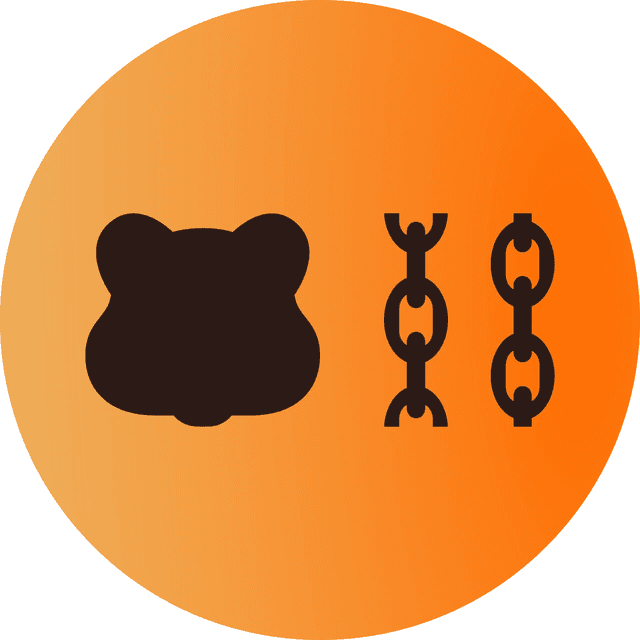How to Read Crypto Charts
Navigating the volatile world of cryptocurrency requires more than just luck—understanding crypto charts is essential for making informed investment decisions.
Technical analysis, the practice of interpreting price movements through charts, empowers traders to predict potential trends and capitalize on opportunities. This guide will break down the fundamental elements of chart reading, equipping beginners with the tools to confidently analyze the crypto market.
Understanding Basic Chart Types
Crypto charts come in various forms, each offering unique insights into price behavior, with strengths and weaknesses that suit different trading styles.
Line Charts
Line charts plot closing prices over a set period, connecting them with a single line to visualize trends. They offer a simple, uncluttered view of price direction, making them ideal for beginners, though they omit details like intraday highs and lows. For example, a line chart might show a bullish trend with steadily rising prices or a bearish trend with a consistent decline over weeks.
Bar Charts
Bar charts display the open, high, low, and close (OHLC) prices for each time period, represented as vertical bars with horizontal ticks. They provide more data than line charts, revealing price ranges and opening/closing levels, but their complexity can overwhelm novices. Imagine a bar chart showing a crypto asset opening at $50, peaking at $55, dipping to $48, and closing at $53—each bar tells this story clearly.
Candlestick Charts
Candlestick charts also present OHLC data but use a visually striking format with "bodies" (open-to-close range) and "wicks" (high-to-low range). Bullish candlesticks (often green or white) indicate a price increase, while bearish ones (red or black) show a decrease, and patterns like "doji" or "hammer" can signal reversals or continuations. For instance, a green candlestick with a long lower wick might suggest buyers stepping in after a dip, hinting at a bullish reversal.
Key Chart Elements and Indicators
Mastering key chart elements and indicators equips readers with the tools to decode price action effectively.
Support and Resistance Levels
Support levels are price points where buying pressure typically halts a decline, while resistance levels mark where selling pressure caps an ascent. Identifying these zones helps predict reversals (bouncing off support) or breakouts (piercing resistance). On a chart, you might see XRP repeatedly bouncing off $0.50 (support) and struggling to break $0.60 (resistance).
Trend Lines
Trend lines are drawn by connecting higher lows (uptrend) or lower highs (downtrend) to highlight the market’s direction. They act as dynamic support or resistance, guiding traders on potential entry or exit points. For example, an uptrend line on a Bitcoin chart might connect price dips over months, showing sustained bullish momentum.
Volume
Volume measures the amount of crypto traded in a period, confirming the strength of price moves—high volume during a rally signals robust buying interest, while low volume may indicate weakness. A chart might show a sharp price spike paired with towering volume bars, reinforcing the move’s legitimacy. Conversely, a price drop with minimal volume could suggest a lack of conviction.
Moving Averages (MA)
Moving averages smooth price data to reveal underlying trends, with simple moving averages (SMA) averaging prices equally and exponential moving averages (EMA) prioritizing recent data. A 50-day SMA crossing above a 200-day SMA (a "golden cross") often signals a bullish trend. On a chart, these lines might show Ethereum’s price stabilizing above its 50-day EMA, hinting at sustained growth.
Relative Strength Index (RSI)
The RSI, ranging from 0 to 100, measures momentum to identify overbought (above 70) or oversold (below 30) conditions based on recent price changes. An RSI of 80 might warn of an impending pullback, while a dip to 25 could suggest a buying opportunity. A chart might display XRP’s RSI dropping to 28, aligning with a price bounce.
Moving Average Convergence Divergence (MACD)
The MACD compares a short-term EMA (e.g., 12-day) to a long-term EMA (e.g., 26-day), with a signal line and histogram indicating trend shifts. A MACD line crossing above the signal line suggests bullish momentum. For example, a chart might show the MACD histogram turning positive as Bitcoin’s price accelerates upward.
Common Chart Patterns
Recognizing recurring patterns helps traders anticipate market shifts with greater precision.
Head and Shoulders
The head and shoulders pattern signals a bearish reversal, featuring a peak (head) flanked by two lower peaks (shoulders) and a "neckline" support level. A breakdown below the neckline confirms the pattern, often predicting a drop equal to the head’s height. A chart might depict Ethereum forming this shape, with the price collapsing after breaching the neckline.
Inverse Head and Shoulders
The inverse head and shoulders is a bullish reversal pattern, with a low (head) between two higher lows (shoulders) and a neckline resistance. A breakout above the neckline validates the pattern, suggesting an upward move. For instance, a chart could show XRP rallying after breaking its inverse neckline at $0.55.
Double Top and Double Bottom
A double top is a bearish pattern with two peaks at resistance, confirmed by a drop below support, while a double bottom is bullish, with two troughs at support followed by a rise above resistance. These patterns indicate exhaustion of the prior trend. A chart might illustrate a double bottom on Binance Coin, with the price surging after clearing $300.
Triangles (Ascending, Descending, Symmetrical)
Triangle patterns—ascending (bullish, rising lows), descending (bearish, falling highs), or symmetrical (neutral, converging)—signal consolidation before a breakout or breakdown. Traders watch for the price to breach the triangle’s boundary. A symmetrical triangle on a Solana chart might resolve with a sharp upward break, reflecting pent-up momentum.
Practical Tips for Chart Reading
Practical strategies enhance the effectiveness of chart analysis for real-world trading.
Combine Multiple Indicators
Using multiple indicators, like RSI and MACD, strengthens signal reliability—RSI might flag oversold conditions, while MACD confirms a trend reversal. Relying solely on one can mislead, as a high RSI alone might not guarantee a drop. For example, combining these might have confirmed XRP’s rebound from a low.
Use Different Timeframes
Analyzing multiple timeframes—daily for trends, hourly for entries—offers a fuller picture of price action. A daily chart might show a steady uptrend, while a 15-minute chart pinpoints a dip to buy. This approach ensures traders don’t miss the forest for the trees.
Stay Updated with Market News
News events, like regulatory shifts or exchange listings, can override technical signals, so staying informed is critical. A sudden XRP partnership announcement might spark a rally despite bearish indicators. Pairing technicals with fundamentals creates a robust strategy.
Practice and Patience
Chart reading improves with time—beginners should practice on demo accounts or small trades to build confidence. Rushing into decisions often leads to errors, so patience is key. Over months, spotting patterns becomes second nature.
Common Pitfalls to Avoid
Avoiding frequent mistakes preserves capital and sharpens analysis skills.
Over-Reliance on Indicators
Indicators alone don’t tell the full story—ignoring sentiment or news can lead to misjudgments, like buying into a false breakout. Balance is essential. A spike in volume might validate an EMA crossover others miss.
Confirmation Bias
Seeing only what you want—like forcing a bullish pattern during a downtrend—distorts reality. Objective analysis, even if it contradicts hopes, prevents costly errors. Regularly reassess assumptions to stay grounded.
Ignoring Risk Management
Failing to set stop-losses or over-sizing positions risks devastating losses, no matter how perfect the chart looks. A sudden crash could wipe out gains without safeguards. Always prioritize capital preservation.
Conclusion
This guide has covered the essentials of crypto chart reading, from basic types and key indicators to common patterns and practical tips. Beginners should keep learning, practicing on platforms like TradingView, and refining their skills over time. By mastering technical analysis, you’ll make smarter, data-driven investment decisions in the dynamic crypto market.
Related articles







